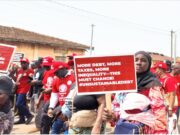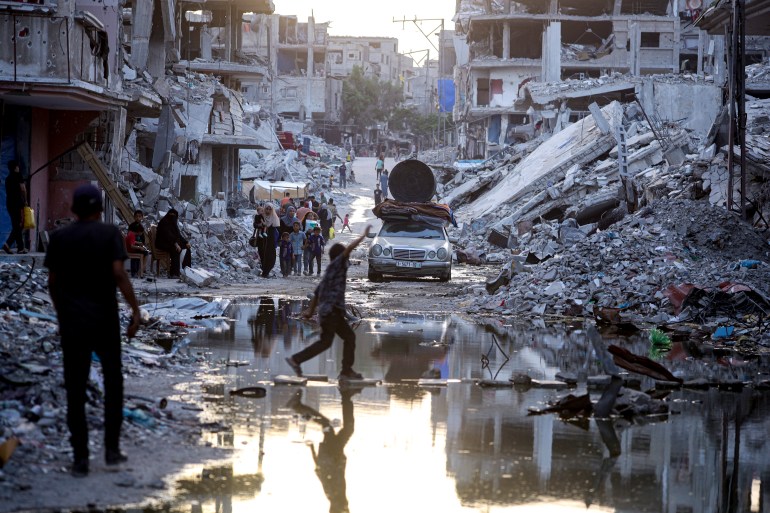The war in Gaza, now entering its second year, continues to have devastating repercussions on the economy and labour market across the OPT (Occupied Palestinian Territory).
The economic cost has been immense, with real GDP in the OPT declining by 32.2 per cent over the past year; the West Bank saw a contraction of 21.7 per cent, while the Gaza Strip experienced a staggering drop of 84.7 per cent.
Value added in “Construction” and “Manufacturing, mining, water and electricity” sectors dropped by 47.3 per cent and 35.4 per cent respectively, driven by uncertainty and restrictions on labour and material movement, while the “Information and communication services” sector, typically relatively resilient during wars, declined by 18.5 per cent.
The economic downturn has severely undermined living standards, with real GDP per capita dropping by 33.4 per cent across the OPT. In the Gaza Strip, per capita GDP plunged by 84.9 per cent, while in the West Bank, it decreased by 23.4 per cent. Gaza’s per capita GDP now stands at just 5.2 per cent of that in the West Bank.
The labour market has borne the brunt of the war, with the unemployment rate in the OPT surging to 51.1 per cent, reaching 34.9 per cent in the West Bank and 79.7 per cent in the Gaza Strip. Total unemployment averaged 734,685 over the past year, marking an increase of 363,213 compared to the previous year.
While most job losses led to unemployment, some individuals left the labour force altogether. Labour force participation rates in the OPT declined from 45.2 per cent in the pre-war period, October 2022 – September 2023, to an average of 43.5 per cent during the war year.
In the West Bank, the war has taken a severe toll on men, with employment plummeting by more than 28 per cent, unemployment tripling, and inactivity levels rising by 12.3 per cent. This was largely due to job losses incurred by the more than 150,000 Palestinian men formerly employed in Israel. While women have faced fewer job losses, concerns persist regarding their already low employment and participation rates, the challenges they face in terms of working conditions and exposure to exploitation, as well as the difficulties of reintegrating into the labour market.
Amid widespread job losses and rising prices, real daily wages in the West Bank have fallen, with men facing a steeper decline, again largely due to significant job losses in the Israeli labour market. Despite this, the gender pay gap persists, with women earning 19 per cent less than men.
To pave the way for a sustainable recovery, an immediate cessation of war is essential, facilitating a “building forward better” approach that prioritizes infrastructure development through employment-intensive infrastructure, decent job creation, skills development and inclusive economic support.
Source : A Year of War in Gaza: Impacts on Employment and Livelihoods in the West Bank and Gaza Strip:1 Bulletin No. 5. ILO Bulletin.






























